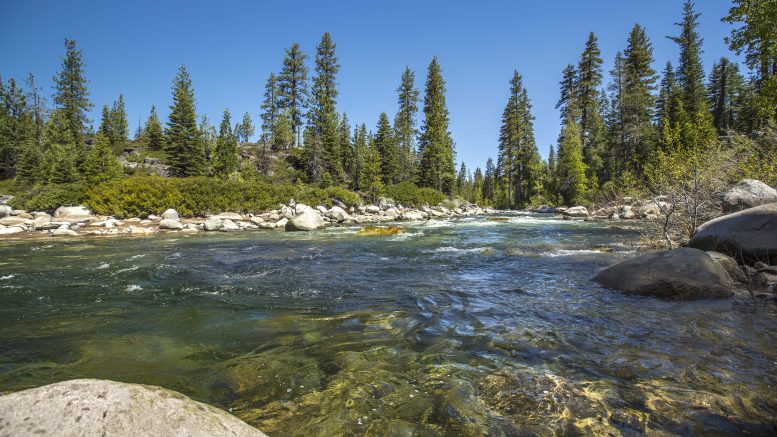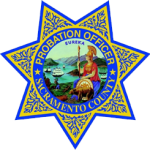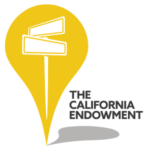Planning ahead keeps Roseville taps flowing while community keeps growing
by Debbie Arrington
There’s a reason so many people are flocking to Roseville and Placer County: It’s the water.
In particular, Placer County and its largest city, Roseville, have tapped into reliable sources of water, not just for now, but for generations to come. That makes sustainable growth possible while maintaining a high quality of life.
Other counties aren’t so lucky, as water scarcity is a concern statewide. The impact of long-term droughts and climate change have some water agencies scrambling to cope.
But thanks to careful planning, long-range vision and location, the water future for Placer County and Roseville looks especially bright.
Placer County is in a very good place, water-wise, said Andy Fecko, general manager of the Placer County Water Agency (PCWA).
“This is a good place to live,” Fecko said. “Our communities are growing. Part of the reason why is because there’s enough water to support them.
“The number one reason Placer County is prepared for its future is that our forefathers in the 1950s had the foresight to build projects that could supply water for generations,” he added. “In the 2000s, we took our legacy and improved upon it. We diversified so we’re not solely dependent on surface water.”
“The real secret sauce to our future is to make sure that communities that use groundwater are connected to communities that use surface water.”
Andy Fecko, General Manager, Placer County Water Agency
According to official estimates, West Placer County is expected to grow to about 500,000 residents—more than double its current population. Every new neighborhood must secure its water supply before homes can be built.
“We have enough water for all and specific plans approved by communities in Placer County,” Fecko says.
While maintaining water reliability and serving their customers’ needs, local water agencies work together to preserve the area’s beauty and the American River’s health.
“People move here because they love the natural environment,” Fecko noted. “We want to preserve it.”
Placer County’s proximity to ample surface water from the American River—and its run-off from Sierra snow—is a major plus.
“In Placer County, we’ve only used about one-third of our available supply from the Middle Fork Project, built in the 1960s [on the American River],” Fecko explained. “Fully two-thirds [of Placer’s current contracted allotment] is still available for development and agriculture in Placer County.
“It doesn’t mean people shouldn’t be efficient with water use—they should. Reducing use helps stretch our water supply. We need to take that into account in our water planning.”
Many water decisions are based on past history, Fecko noted.
“If close to the American River, communities used surface water from the river as their primary source,” he explained. “Other communities farther away from the river used wells. The real secret sauce to our future is to make sure that communities that use groundwater are connected to communities that use surface water.
“That’s the plumbing challenge of the future, making those connections. So when there’s plenty of water in the system—like in 2023 when we had a very wet winter—we can source surface water to groundwater communities and, in dry years, groundwater agencies can help surface water agencies with their water needs.”
Groundwater allows water planners greater flexibility. Placer County has wonderful resources underground as well as on the surface.
“Think of the valley as a big bowl,” Fecko explained. “It’s like a bowl filled with very coarse gravel. It doesn’t refill as often as it used to. You can refill that bowl. You can recharge it [by pumping water into wells].”
“Groundwater storage is the least environmentally impactful project. The natural filtration is always a plus,” Fecko said. “It’s the smartest and cheapest grower of water there is.”
The basin—the valley’s natural underground bowl—can hold an estimated 1.8 million acre-feet of water. That’s double the size of Folsom Reservoir at full capacity.
“We have two Folsom Lakes-worth of water storage right under our feet,” Fecko said. “Why not utilize that storage first instead of building another dam? It’s good for the ecosystem and fights subsidence [soil sinkage].”
Roseville recently expanded its abilities to recharge groundwater with two new Aquifer and Storage and Recovery (ASR) wells. During wet years, these wells can pump water into the ground, and they can also pump out fresh water when needed.
“[Cities] like Roseville are leading the way so when we have multi-year droughts we can rely on that piggy bank of water,” Fecko said. “The City of Roseville is such a forward-looking agency.
“We’re carrying forward the vision of people who came before us, from rural Placer to the Sacramento River. We’re on the job, working every day to not only ensure there’s enough water, but that it is delivered it in a sustainable, natural way.”
For more information, visit www.roseville.ca.us/government/departments/environmental_utilities/at_your_service/water_supply



























